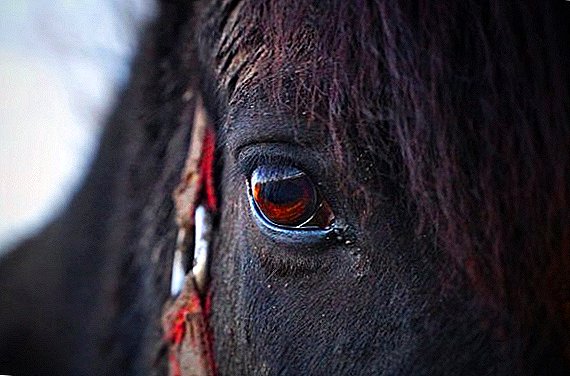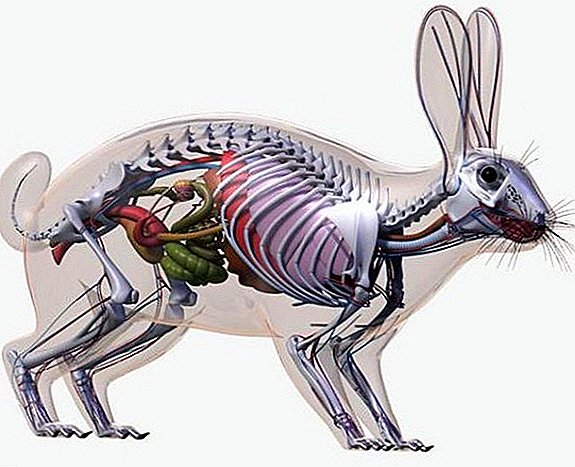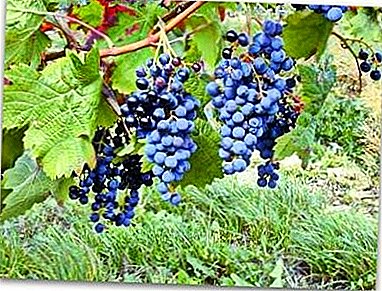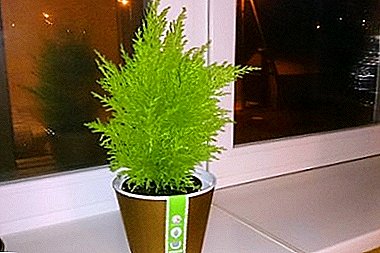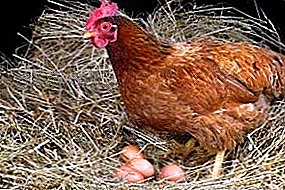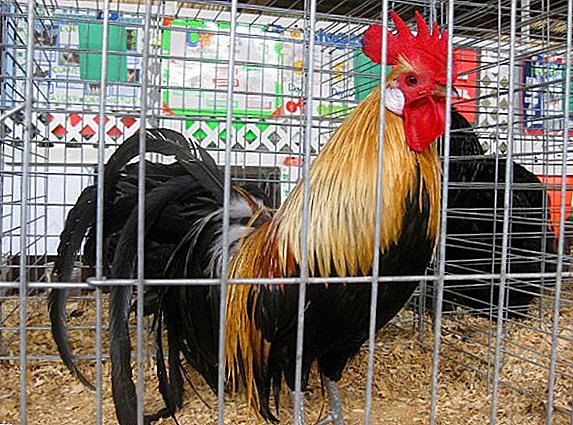 Breeding of ornamental chickens is a kind of hobby that real enthusiasts are engaged in, because these beauties are not turned up for eggs or meat, but solely for aesthetic pleasure.
Breeding of ornamental chickens is a kind of hobby that real enthusiasts are engaged in, because these beauties are not turned up for eggs or meat, but solely for aesthetic pleasure.
One of the gems of such poultry is considered to be the Phoenix breed of decorative hens.
History of origin
Hens of Fen-huan breed - the ancestors of the modern Phoenix - come from China and appeared in the first millennium AD. Even then they had long tails, but somewhat shorter than the current standard Phoenix. Later, these chickens turned out to be in Japan, where under the names Yokohama-tosi and Onagadori became the decoration of the local temples and palaces of the emperor, and these birds could not be bought, but only received as a gift or bartered for something very expensive.  Long-tailed chickens were perched on special high and narrow cages, to the top of which feed and water were supplied. A big problem was the walking of such a pet: for these purposes a carriage for the tail of a bird was often used.
Long-tailed chickens were perched on special high and narrow cages, to the top of which feed and water were supplied. A big problem was the walking of such a pet: for these purposes a carriage for the tail of a bird was often used.
Did you know? The chicken differs from most birds in that it does not need its nest, but lays eggs in any nearby.In 1878, the Phoenix fell into Europe: first to Germany, and then to England and France. Eight years later, the breed was brought to Moscow, but the local society of poultry farmers could not ensure its wide breeding. Modern representatives of the breed were obtained as a result of breeding with Japanese Onagadori and Yokohama-Toshi. In Europe, long-tailed chickens received the standards of their breed, what the German specialists did, and they limited the maximum length of the Phoenix tail to three meters.
Breed signs
The breed is described as a slender, graceful bird with an extra-long tail. Males and females have some differences.
Check out also such ornamental breeds of chickens as: Araucana, Ayam Tsemani, Hamburg, Chinese Silk and Sebright.
Rooster
According to generally accepted German standards, the rooster grows to 2-2.5 kg, and the chicken to 1.5-2 kg. The majestic appearance of the male gives a straight body and a wide, elongated back, slightly narrowing in the lumbar region. The rooster has a low, volumetric and flat long tail on the sides. Since the genotype of the Phoenix does not have a gene that activates annual molting, the tail of these birds continues to grow all their life, extending over the year by about 0.9 meters and reaching almost three meters in adulthood. The bird's head is small, topped with a simple, standing comb.  The beak has an average size and is bluish or yellowish, the eyes are dark orange. The rooster has miniature white lobes and scarlet medium length earrings. On his neck are narrow and long feathers setting behind his back. The plumage on the lower back also increases throughout life, so the old phoenixes can boast a long, drooping feather that completely hides the belly. The wings of the bird are closely pressed to the body. The legs are medium, with a dense layer of feathers. Metatarsus thin, dark with bluish or greenish tint. Rooster feathers - hard and narrow.
The beak has an average size and is bluish or yellowish, the eyes are dark orange. The rooster has miniature white lobes and scarlet medium length earrings. On his neck are narrow and long feathers setting behind his back. The plumage on the lower back also increases throughout life, so the old phoenixes can boast a long, drooping feather that completely hides the belly. The wings of the bird are closely pressed to the body. The legs are medium, with a dense layer of feathers. Metatarsus thin, dark with bluish or greenish tint. Rooster feathers - hard and narrow.
Important! The main distinguishing feature of the breed Fenix - its long tail. If a bird has short feathers, then this is a reason for its rejection. The disadvantage for the representative of this breed are also considered red lobes.
Chickens
Chickens differ from roosters in a lower, smaller, and graceful body. Their head is crowned with a small, straight, standing scallop and miniature ear rings. The tail is horizontal, flat on both sides, it is long, but shorter than that of the rooster. Steering tail feathers - elongated, having the appearance of a saber. The tail is distinguished by great pomp and has long tailing feathers, rounded off at the ends, covering the helmsmen. Unlike the rooster, the presence of spurs is not considered a defect.
External signs
The breed has 5 basic plumage colors.
Wild color
Cock. The basic tone is brown, resembling chernozem. The head has a dark brown color, turning into a reddish neck with black veins located along the feathers. The loin follows the color of the neck, the lower part of the bird is black, the back and wings are brown. Fly feathers I order - black, II order - brown. Cocktail tail and mirrors have an emerald sheen, which is the main decoration of the representatives of this color.
Find out how much chicken lives: home, layer, broiler.
Hen. It has a speckled, camouflage color. The black head passes into a brownish neck with a thin brown border on the feathers. The plumage of the upper part is mostly brown, with dark specks and light green tint.  Feathers - brown, with light rods, without a rim on the upper part of the body. On chestnut chest there are small black specks, the belly and legs of the bird are dark gray, and the tail is black.
Feathers - brown, with light rods, without a rim on the upper part of the body. On chestnut chest there are small black specks, the belly and legs of the bird are dark gray, and the tail is black.
Did you know? In ancient times, in Japan, the tradition of keeping the most valuable long-tailed roosters in the windows of houses was popular, and taking them out for a walk, winding tail feathers into something like papillotok.
Orange mane
Cock. On the head, neck and lower back - orange plumage. The back and wings are dark brown, the lower half of the body and the legs are black. The feathering feather of the first order is black, and the second order is light yellow on the outside. The mirrors and tail are black with an emerald sheen.
Read also about how to keep chickens in the winter season.
Hen. The head is dark brown, the neck is yellow-orange with black specks. The wings and upper half of the body are warm brown, distinguished by small black specks and light feather rods. The chest has a discreet orange hue. The belly and legs are gray, the tail is black. 
White
Representatives of this color should be absolutely white with no minimal admixture of other shades. The presence of even a small yellowness is not allowed. 
Silver mane
Cock. Neck, head and loin have a pronounced silver tide, back and wings - white. The rest of the cock has black plumage with a greenish overflow. Swing feather I order - black, II order - white outside.
Hen. Looks much more restrained than a rooster. The head is snow-white with a beautiful silver sheen, black strokes are added to the neck. The body color is dark brown, the chest is beige, with age closer to orange. The belly and legs are gray, the tail is absolutely black. 
Golden-maned
Cock. The exterior is identical to orange-maned, only the color of the feathers on the head, neck and lower back is closer to yellow with a metallic sheen.
Golden pheasant at home - how to breed.
Hen. The color is similar to orange-maned chicken, but with a bias in the yellow range of colors.
Productive characteristics
Phoenixes are not intended for meat and egg breeding, although rare experts note the pleasant taste of their meat. Roosters grow to 2.5 kg, chickens usually do not exceed 2 kg. A young chicken on average produces 100 eggs per year, the maximum egg production reaches 160 eggs. Eggs are small, weighing up to 45 g, light yellow.
Important! Persistent scientists from the Japanese University of Nagoya, through breeding the breed, managed to grow Phoenixwhose tail reached a length of 11 meters. A 17-year-old representative of this breed with a 13-meter tail was recorded in the same country.
Dwarf Phoenixes
The appearance of the dwarf variety of breed, in addition to its miniature size, is no different from the standard of the breed. Its tail also decreased proportionally, and its length reaches 1.5 meters.  The weight of an average dwarf rooster is 0.8 kg, chicken - 0.7 kg. In addition, laying hens produce no more than 60 eggs per year with a mass of one egg about 25 grams.
The weight of an average dwarf rooster is 0.8 kg, chicken - 0.7 kg. In addition, laying hens produce no more than 60 eggs per year with a mass of one egg about 25 grams.
Advantages and disadvantages
Breed advantages:
- exquisite appearance;
- lack of attention to food;
- peaceful temper;
- average egg production.
Breed deficiencies:
- require non-standard conditions of detention;
- inconvenience in the process of walking;
- difficult breeding.


